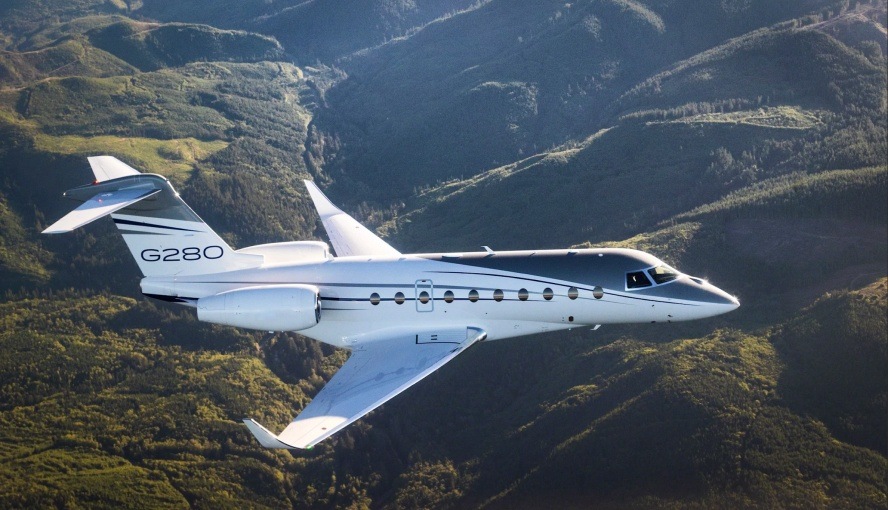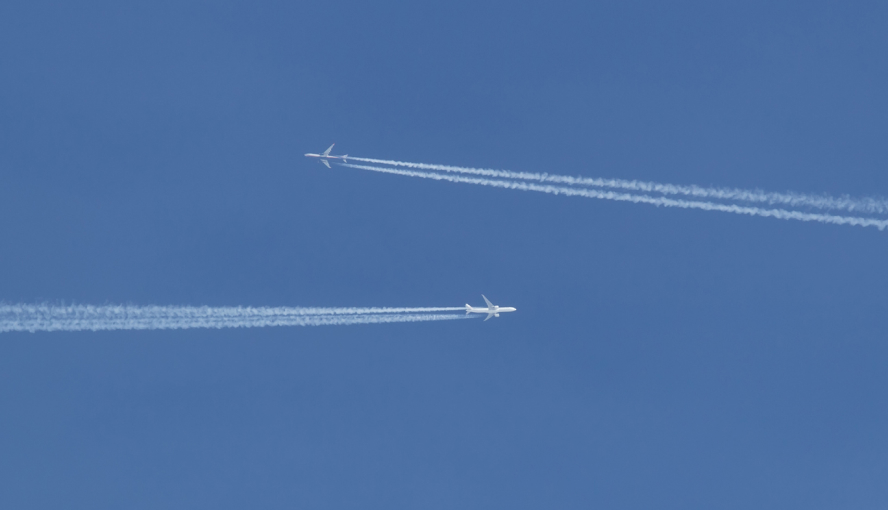Private jet travel raises the bar for comfort, style, and efficiency. Compared with flying on a commercial airline, even in business class, stepping on board a private jet saves time. But is this because private jets are simply faster?
Technically, the performance specs for both commercial and private jets are on par. A private jet flies just as fast as a commercial jet, but from check-in to landing, a private jet experience is overall faster.
Yet, you aren’t the only one with questions about how fast private jets fly. Below, we get into the maximum speeds and altitudes of some of the most popular private jet models, then explore how drag, thrust, and lift impact flight speeds.
How fast do private jets fly?
Private jets come in all makes and models, from very light jets like our national fleet of HondaJets to the massive Boeing Dreamliner. Every type of jet has a different maximum speed.
Speed, at least with jets, is measured in knots true airspeed, or ktas. This captures the aircraft’s speed relative to the air mass through which it is traveling. While ktas can be converted into miles per hour (or kilometers per hour), ktas remains a more accurate measurement. You’ll also see Mach speed, which is a measurement against the speed of sound.
So, how fast do private jets fly? Most passenger jets average cruising speeds of 500 to 521 ktas (575 to 600 mph or Mach 0.78 to 0.81).
Many private jets can technically fly faster than this average, but for the comfort and safety of the passengers, most of the time, pilots maintain a lower cruising speed.
Speed variations between different private jet models.
Because there is such variation between each class and each jet model, let’s break jet speed out into a few examples. Below, we look at the maximum private jet speeds from a few of the most popular models in each class:
| Aircraft | Class | Max Speed KTAS | Max Speed km/h | Max Speed mph | Max Speed Mach |
|---|---|---|---|---|---|
| Honda Jet1 | Very Light Jet | 422 ktas | 782 km/h | 486 mph | Mach 0.63 |
| Gulfstream G2802 | Super Mid-Size Jet | 562 ktas | 1049 km/h | 652 mph | Mach 0.85 |
| Cessna Citation Longitude3 | Large Jet | 483 ktas | 895 km/h | 556 mph | Mach 0.72 |
| Bombardier Global 55004 | Long Range | 600 ktas | 1111 km/h | 690 mph | Mach 0.90 |
| Boeing Business Jet5 | Executive Liner | 486 ktas | 900 km/h | 599 mph | Mach 0.78 |
Key factors impacting private jet speed.
Without getting overly technical, there are several major influences on jet speed: thrust, drag, and lift. These are the three core forces that impact the aerodynamics and, therefore, the possible maximum speed of every aircraft that takes to the skies.
The relationship between these forces boils down to complicated equations about airfoil velocity, wing surface area, and airfoil velocity that usually require a physics degree (or a pilot’s license). So here, we use a few simpler concepts to explain these forces.
Propulsion efficiency (thrust)
If a jet’s propulsion system is more efficient, the aircraft can generate more thrust. More thrust means the jet can move faster. Therefore, propulsion efficiency is about how well a jet’s engines convert fuel into the force that moves it forward. The better the propulsion system, the stronger the thrust and the higher speed possible.
Fuselage design (drag)
How fast a private jet can fly is also directly impacted by its fuselage design because it will decrease or increase the drag (or resistance) working against the propulsion. The more aerodynamic the aircraft, the less drag it has during flight and the faster it can travel.
Weight (lift)
The combined weight of the jet, the passengers, baggage, and fuel will all add up to impact maximum speed. In the simplest terms, the more weight a jet carries, the more effort it must put in to move that weight. A heavier jet needs more power (and fuel) to generate enough lift to maintain speed. This is why airlines and private charters are cautious about weight limits — balancing weight is crucial for lift and propulsion efficiency.

How high do private jets fly?
Private jets, like all passenger planes, tend to stick to a band of cruising altitude between 31,000 and 42,000 feet, with commercial airlines usually hitting 33,000 feet.
For some perspective, the world record for the highest-flying aircraft goes back to 1963 when a research jet hit 354,200 ft. or 67 miles. That’s cresting the very edge of space. But rest assured, you won’t be hitting the edge of space on a private jet because 42,000 ft. is usually the maximum approved altitude for all passenger jets.
Altitude matters so much with aircraft because the higher the jet can reach, the faster it can go. The farther you travel from the earth’s surface, the lower the density of the air. As the air thins, there is less drag across the jet’s fuselage, making it more fuel-efficient and allowing it to travel faster.
Within this narrow band of atmosphere, the maximum altitude depends on the jet type. According to the California Aeronautical University, “Smaller aircraft, whether commercially operated or not, will fly at lower altitudes, often below 15,000 feet. The reason for this is usually due to the type of engine they have which makes them unable to reach the same heights.”
But there are many exceptions to this rule. For example, the world’s largest liners, like a Boeing 787 Dreamliner, can reach heights of 43,100 ft., but a very light jet like Volato’s™ fleet of HondaJets has a similar service ceiling of 43,000 ft. Two jets at opposite ends of the size spectrum but with a very similar optimal cruising range.
Why do jets fly higher than other planes?
Flying higher (up to a point) is better for several reasons. Of course, faster speed is one of the critical reasons to max out cruising altitude, but that’s not the only benefit.
Fuel efficiency
Air is thinner at higher altitudes, which means lower drag on the jet’s fuselage. As a retired commercial airline pilot interviewed for Popular Mechanic explained, “You want to be pretty much as high as you can. The jet engines are more efficient at higher altitudes, and there’s less air resistance.”
Avoid turbulence
Weather and headwinds are generally a concern under 30,000 ft., both of which will increase turbulence. Private jets and all passenger aircraft strive to reach their cruising altitude as quickly as possible in order to increase inflight comfort for the passengers on board.
Increase flight safety
Between takeoff and cruising altitude, jets must navigate busier and more turbulent skies: more birds, more weather events, and more air traffic. With turboprops, helicopters, and piston-engine aircraft taking up the lower altitudes, it only makes sense for passenger jets to fly a bit higher.

Are these speeds safe?
There is a reason why every private jet model has a maximum speed. As part of the exhaustive aerospace design process, which can take years, sometimes decades, every new model goes through rigorous testing to determine the safest maximum speed.
Interestingly, even if the same jet model has a military application, like Bombardier’s Global 5500, which has a commercial jet, private jet, and defense alternatives, the maximum potential speed of Mach 0.90 is across the board.
Under most circumstances, the aircraft will never push the upper limits of the speed range. Instead, pilots calculate optimal flight speed based on the specifics of the mission.
This calculation includes total weight (passengers, crew, baggage, and fuel), jet stream, weather patterns, and dozens of other factors. Optimal speed balances fuel efficiency with flight time and general flight safety to ensure every mission gets to where it’s going on time and comfortably.
Private jet flight time vs. commercial flight time.
It is no surprise to anyone familiar with flying via private charter, but there are substantial time savings to be had. Flying private from Point A to Point B is a much more streamlined experience over a comparable nonstop commercial flight.
From the moment you arrive at the airport, you are saving time. Instead of coming three hours before takeoff to navigate security, check-in, and the chaos of an airport — with Volato™, you’ll need just a fraction of this pre-flight time.
There is no standing in line at the gate in a sea of other passengers, and there are rarely significant delays waiting in line to taxi to the runway. Flying private can shave hours off of your travel schedule.
These time savings were examined by the European Business Aviation Association in a study completed in 2014. According to their assessment, the average time saved between a private flight and the fastest commercial equivalent was 127 minutes per trip.
More impressive still, roughly 20 percent of the flights in their study were five hours faster than the best commercial alternative. Although this investigation recognizes a few commercial outliers, the results speak for themselves. Flying private is faster. The numbers prove it.

Stop wasting your limited time. Fly Volato.
How fast can a private jet fly? From check-in to touch-down, flying private is inherently faster. Volato promises a seamless experience from the moment you connect to our Experience Concierge team to breeze through a quick 15-minute check-in.
If you are ready to get back your valuable time, it’s time to Fly Volato.